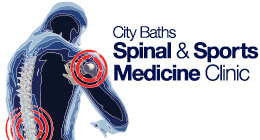Traumatic brain injury (TBI) is a common problem in many Australians.
Emergency departments in the USA report state an estimated 1m to 1.5m injuries occurring each year.
Although this likely represents an under-reported figure as many people do not seek medical care for head injuries. Other estimates of the number of concussions occurring annually are as high as 3.8 million. Fortunately; of these injuries approximately 85% are considered mild traumatic brain injuries (mTBI) or concussions. That said, these injuries can still generate enormous difficulties for some people despite their seemingly benign nature.
Concussion is a complex process that affects the brain and is induced by traumatic biomechanical (rotational and angular) forces. Importantly, direct impact to the head is not required to cause a concussion and temporary loss of consciousness may or may not occur. No abnormalities are found on standard brain imaging and it is important to recognise that the neck and inner ear can also be impacted by these injuries. Typically, a concussion results in the rapid onset of neurological impairments that self- resolve within 2 weeks in adults and 4 weeks in children. In some cases, however, symptoms can be prolonged and a “wait and see” treatment approach is not adequate.
Concussion symptoms vary between individuals, but can be roughly subcategorised as physical (eg headache, dizziness, fatigue, unsteadiness), cognitive (eg “head fog,” difficulty concentrating), emotional (eg irritable, anxious or depressed mood) and sleep issues (eg difficulty sleeping or needing to sleep excessively). Interestingly, these problems can drive each other in different ways. For example, mood changes will often impact upon sleep, but likewise, poor sleep quality can lead to mood changes. This necessitates that a thorough and individualised assessment be made across all of these domains (and of the brain, neck and inner ear) in order to enable treatment to be tailored to the presenting individual according to their particular findings and needs.
Current evidence demonstrates that those who experience higher severity symptoms and particularly dizziness at onset are more likely to develop persistent symptoms that require treatment. Pre-existing or the new development of headaches or mood disorders also appear to be risk factors for symptoms persisting without treatment and so this should be given due consideration and guide the need for assessment and specific treatment rather than taking a “wait and see” approach, particularly beyond the time frames given above.
There is a great deal that can be done for persistent concussion symptoms. The key is to have a thorough assessment from a clinician who understands all elements of the disorder and how they can interact with each other, as well as the capacity to assess the brain, inner ear and neck to determine their relative contribution to the individual’s presenting symptoms. This then enables treatment to be tailored to the individual and their specific needs.
Written by Alastair Flett – Specialist Musculosketal & Vestibular Physiotherapist

